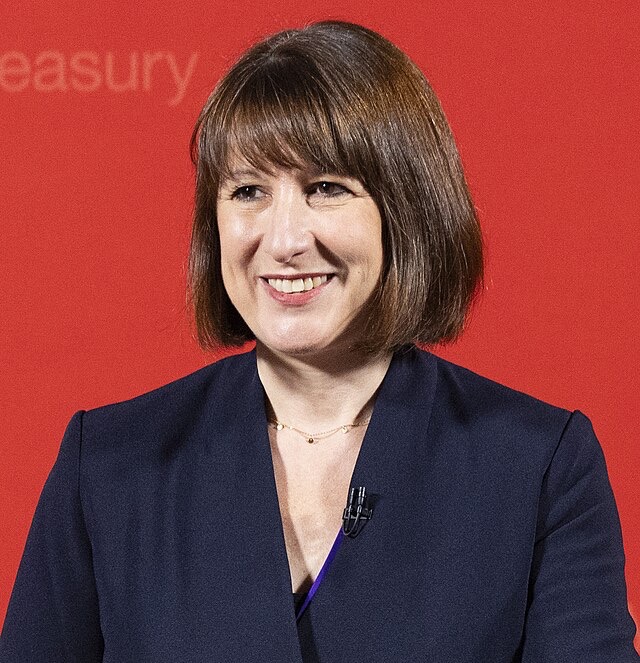Chancellor considers ‘proportional’ levy as part of radical overhaul that could eventually replace council tax
Chancellor Rachel Reeves is examining plans for a new property tax on homes worth more than £500,000 that could replace stamp duty on owner-occupied properties, as the Treasury searches for revenue-raising options ahead of the autumn budget.
Senior Treasury ministers have instructed civil servants to analyse how a “proportional” property tax might function and model its potential impacts, with the proposals drawing partly from research by centre-right thinktank Onward authored by Tim Leunig, the former government adviser who developed the furlough scheme.
The proposed tax would be paid by homeowners when selling properties exceeding £500,000 in value, with rates determined centrally and revenue collected through HMRC. This approach would impact approximately 20 per cent of property transactions – significantly fewer than the current stamp duty system, which affects roughly 60 per cent of sales.
Two-Stage Reform Plan
Initial plans focus on establishing a national property levy that would replace stamp duty on primary residences, whilst second homes would remain subject to existing stamp duty arrangements. The Treasury is also considering a subsequent local tax that could eventually supersede council tax to support struggling local authority budgets.
The average UK property price stood at £272,664 in July according to Nationwide, meaning most homeowners would avoid the new levy. In London, however, where the only region where average house prices exceed £500,000 at £565,637, the impact would be more substantial.
“These proposals would make it easier and cheaper to move house, for a better job, or to be near family, as well as being fairer,” said Tim Leunig, chief economist at Onward. “It should not be the case that a terraced house in Burnley pays more than a mansion in Kensington and it wouldn’t be under these proposals.”
Revenue Implications
Last financial year, stamp duty on primary residences generated £11.6 billion for the Treasury, though this figure varies substantially based on housing market activity. Officials claim the new system would eventually match stamp duty revenues whilst providing greater consistency.
The transition away from stamp duty would necessitate careful phasing, with multiple approaches under consideration for managing the changeover period. Implementation of a national property levy could occur within the current parliamentary term, whilst replacing council tax would require considerably more time and likely depend on Labour securing re-election.
Addressing Tax System Inequities
The proposals come as Labour maintains its pledge to protect the triple lock on state pensions whilst searching for alternative revenue sources. The party faced criticism for raising national insurance on employers, which many viewed as an indirect tax on working people, breaking their manifesto promise.
Deputy Prime Minister Angela Rayner has been a vocal advocate for increased wealth-based taxation. In leaked memos earlier this year, she proposed various tax increases including changes to dividend taxes and inheritance tax relief, though none were adopted in the Spring Statement.
The current council tax system, based on 1991 property valuations, has long been criticised as outdated and regressive. Research shows that a Band D home in Blackpool pays £2,277 in council tax annually, whilst in Westminster, a Band D property pays less than half at £973.16.
Onward’s Detailed Proposals
According to Onward’s research, their “horizontal” proportional property tax would see homeowners – not tenants – paying a proportional tax toward local services on house values below £500,000 and a national levy on the value above.
The proposal includes:
- A minimum payment of £800 for any house to help fund local government
- Local rates set by councils, with an average rate of 0.44% to replace council tax income
- National rates of 0.54% for homes between £500,000 and £1 million
- A rate of 0.81% on any value above £1 million
Replacing council tax with this system would be revenue neutral whilst reducing the number of homes needing valuation from 25 million to 16 million, making the process more efficient.
Political and Market Reactions
The proposals have sparked debate about fairness in the property tax system. Supporters argue the changes would create a more equitable system where wealth is taxed proportionally, whilst critics worry about the impact on homeowners in high-value areas, particularly London and the South East.
Andrew Dixon, founder of campaign group Fairer Share, said: “A growing consensus among parliamentarians, think tanks, economists, and campaigners underscores the urgent need to replace the regressive Council Tax and the anti-aspirational Stamp Duty with a more equitable Proportional Property Tax.
However, concerns have been raised about the implementation challenges and potential market disruption during any transition period. The property industry is watching closely, with some warning that uncertainty could affect market activity.
What Happens Next
No definitive decisions have been reached regarding the proposals, according to sources familiar with the discussions. The Treasury is continuing to model various scenarios and assess the potential impacts on different regions and income groups.
The chancellor is expected to provide more clarity on the government’s approach to property taxation in her autumn budget. Any major reforms would likely require extensive consultation and potentially years of planning before implementation.
For now, homeowners and prospective buyers face continued uncertainty about the future of property taxation in the UK, with the possibility of fundamental changes to a system that has remained largely unchanged for decades.
The debate highlights broader questions about wealth taxation and how to fund public services fairly whilst encouraging economic growth and mobility in the housing market.
Follow for more updates on Britannia Daily
Image Credit (Shortened):
Rachel Reeves delivering her first speech as Chancellor to HM Treasury staff (5 July 2024) — by Kirsty O’Connor / HM Treasury, licensed under OGL v3.0, via GOV.UK.



